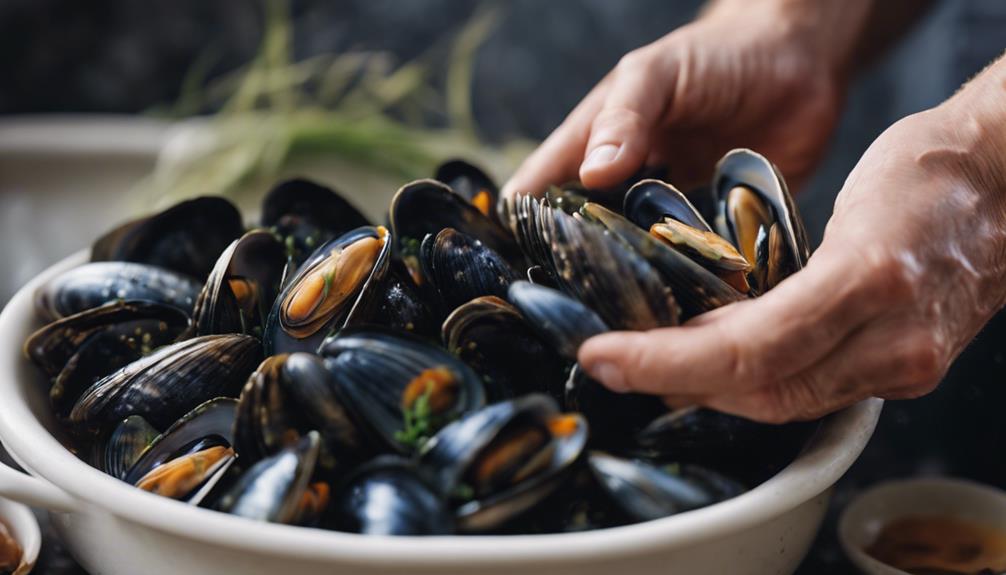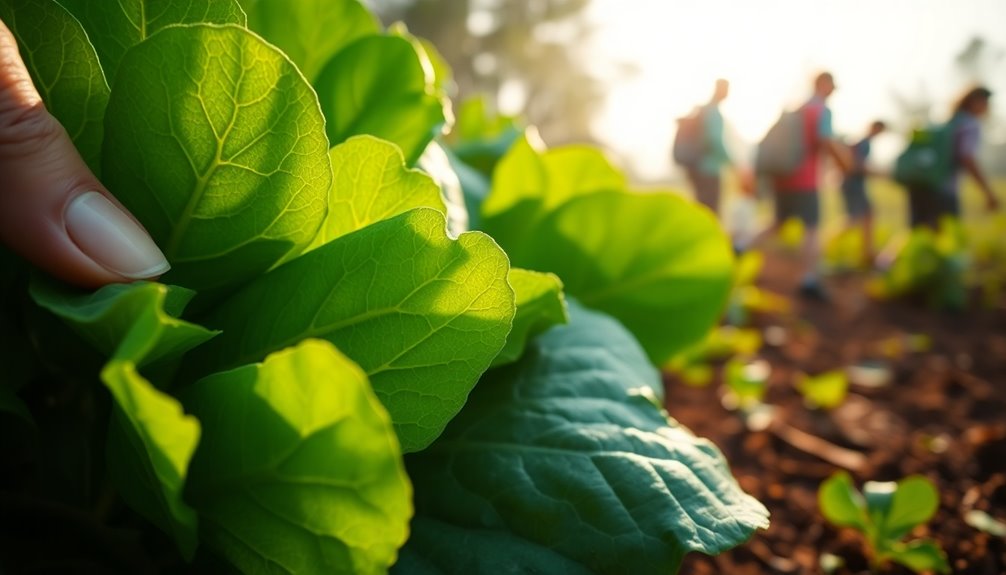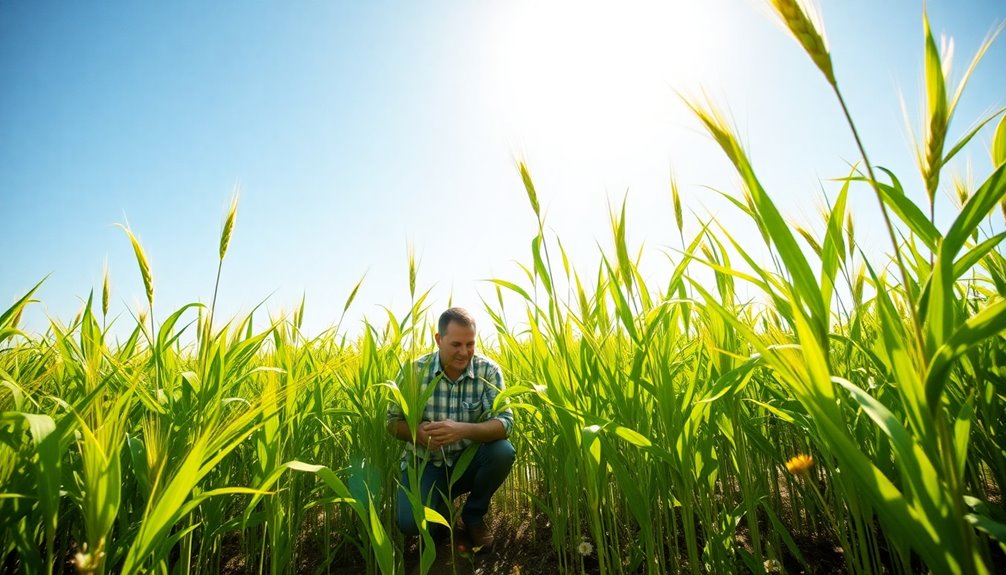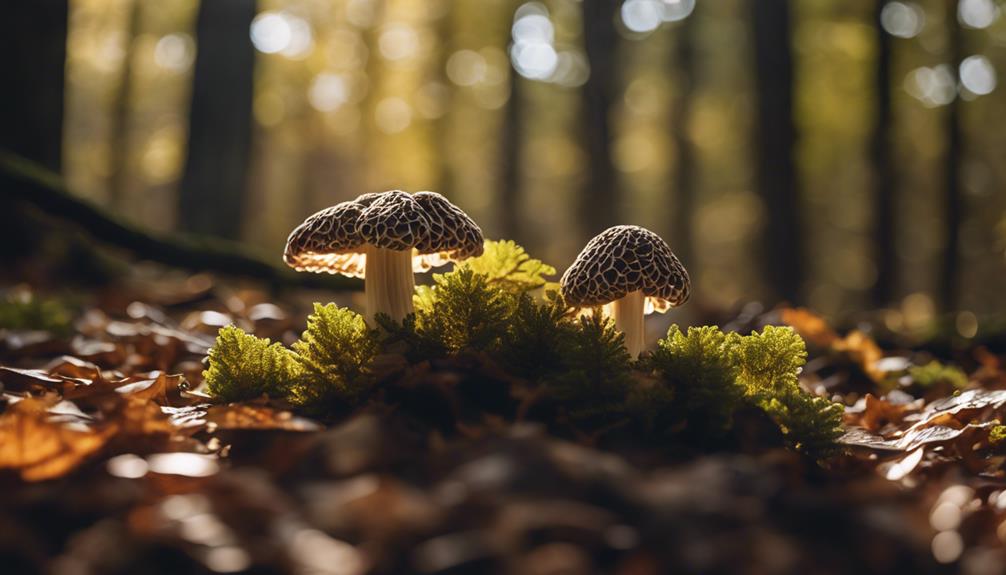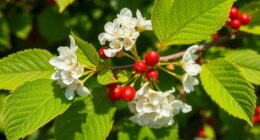To effectively calculate milk production from forage, it is important to consider both the quality and quantity of feed that your dairy cows are receiving. Balancing forage with concentrates is crucial for optimizing milk yield. Moist concentrates can impact the calculation of energy values due to varying moisture content. Understanding the energy content of feed ingredients is essential for estimating milk production. Multiplying the total volume of concentrates by the energy values can help determine milk production from concentrates. Analyzing factors such as forage quality and animal health can have an impact on milk yield. By applying this method, valuable insights can be gained into your dairy production system. Further exploration of concentrate types and monitoring techniques can enhance your understanding of milk production dynamics.
Key Takeaways
- Understand forage quality and quantity impact on milk yield.
- Balancing concentrate and forage crucial for optimal milk production.
- Calculate milk production from concentrates based on energy content.
- Consider moist concentrates like Vitagold for accurate estimations.
- Monitoring and adjusting diets essential for maximizing milk yield from forage.
Importance of Forage in Milk Production
Understanding the importance of forage in milk production is essential for optimizing dairy cow nutrition and maximizing milk yield.
For dairy farmers, the total number of pounds of milk produced per year directly correlates with the quality and quantity of forage provided to their cows.
High-quality forage serves as an important source of fiber, energy, and protein, which are essential for maintaining rumen health, supporting proper digestion, and ultimately enhancing milk production.
Total Milk Production Calculation
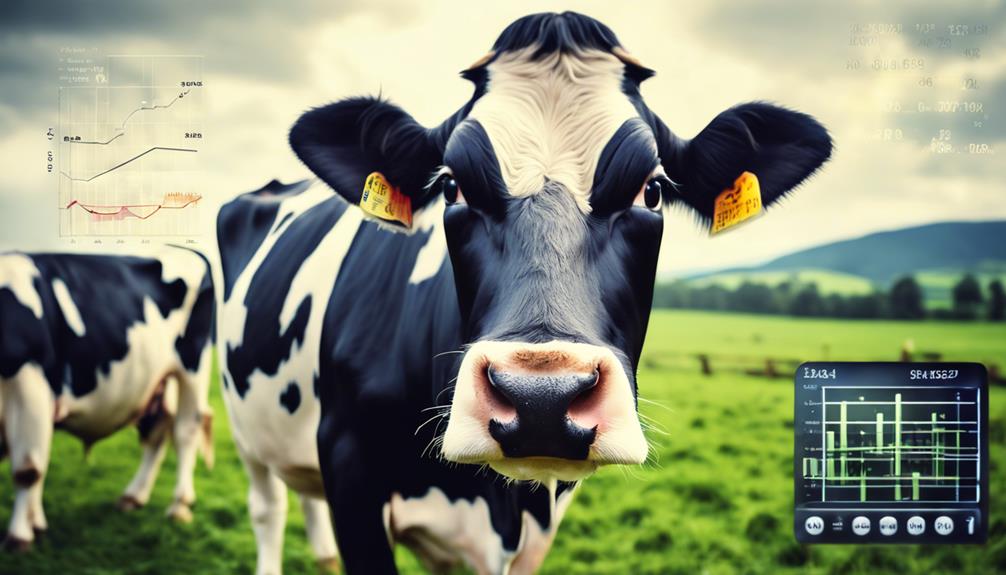
To accurately estimate total milk production from forage, dairy farmers need to take into account both the milk produced by the herd and the total concentrates utilized in the month.
It's essential to include moist concentrates such as Vitagold and Trafford Gold in your calculation for precise results.
By multiplying the total volume of concentrates by 11.5 ME (metabolizable energy) and then dividing the total ME figure by 5.3, you can determine the milk produced from concentrates.
This calculation provides insight into the contribution of forage and concentrates to the overall milk production on your farm.
Understanding this breakdown empowers you to make informed decisions about your herd's nutrition and optimize feeding strategies.
Understanding Concentrates in Feed
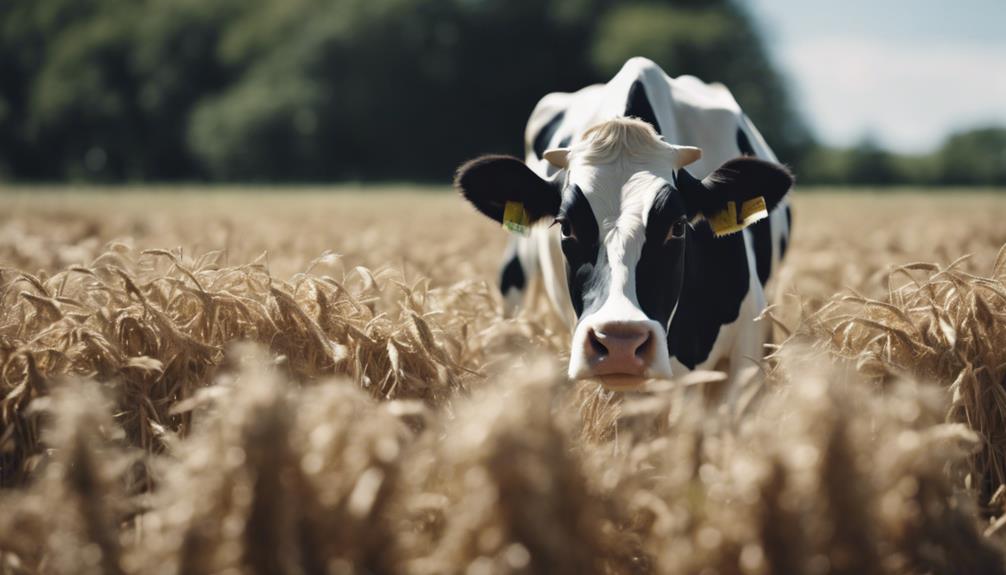
Concentrates in feed play a vital role in boosting milk production by providing essential energy for dairy cattle. Understanding the impact of concentrates on milk yield is essential to optimizing your herd's productivity.
Let's explore how feed concentrate basics can influence the overall milk production process.
Feed Concentrate Basics
Understanding feed concentrates for animal diets is essential to grasp their highly nutritious composition and specific role in meeting nutritional needs. Feed concentrates are formulated to provide essential nutrients like energy, protein, minerals, and vitamins that may be lacking in forage.
By offering a more concentrated source of these nutrients, concentrates play a significant role in supporting animal health and production performance.
Concentrates, with their higher nutrient density, help meet the increased demands of lactating dairy cows for efficient milk production. Balancing the inclusion of concentrates with forage is key to ensuring that dairy cows receive a well-rounded diet that meets their nutritional requirements.
Properly formulated rations that incorporate concentrates can have a substantial impact on milk yield and the overall health of the herd.
To maximize the benefits of concentrates in animal diets, it's essential to understand their composition, quality, and the specific nutritional needs they address. By incorporating concentrates effectively, farmers can optimize milk production efficiency and promote the well-being of their livestock.
Impact on Milk Yield
Maximizing milk yield is greatly influenced by the strategic incorporation of nutrient-dense concentrates in animal feed. Concentrates play a crucial role in boosting milk production, with each kilogram contributing to increased yield.
Understanding the energy content of concentrates is essential for determining their impact on milk production. By accurately evaluating the amount of concentrates fed and their energy value, farmers can calculate the milk production attributed to concentrate consumption.
Moist concentrates like Vitagold and Trafford Gold also play a role in determining their contribution to milk production from forage.
Utilizing the Metabolizable Energy (ME) value of concentrates, farmers can estimate the milk produced from concentrates in the herd by dividing the total ME figure by 5.3. This calculation method helps farmers gauge the significance of concentrates in the overall milk yield, allowing for informed decision-making in feed management for optimal dairy production.
Incorporating Moist Concentrates
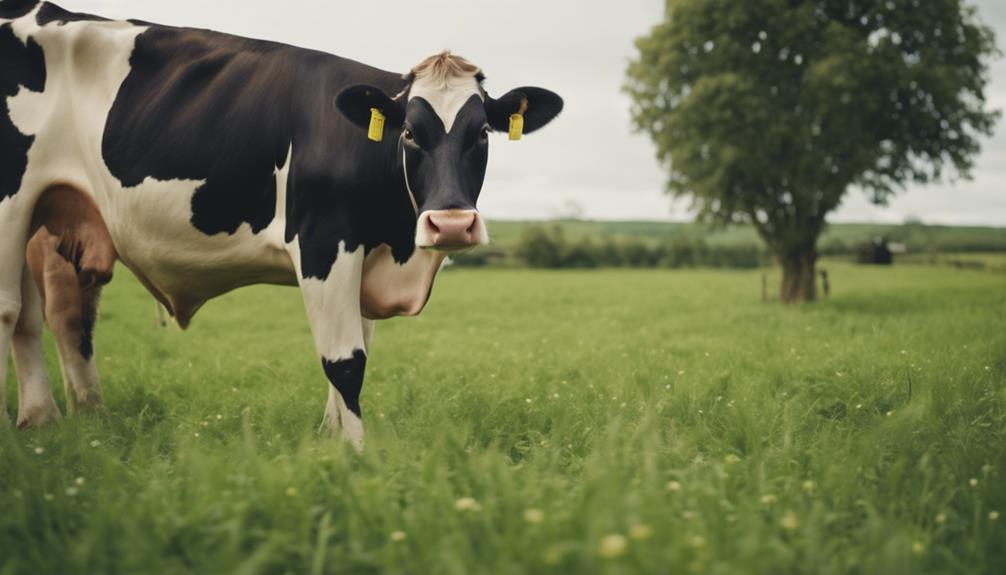
When incorporating moist concentrates into your calculations, you can expect to see benefits in overall feed efficiency.
By considering the nutrient content of these concentrates, you can better assess their impact on milk production.
This step is essential for optimizing forage utilization efficiency and ensuring your herd's nutritional needs are met effectively.
Moist Concentrates Benefit
Incorporating moist concentrates like Vitagold and Trafford Gold into the calculation of milk production from forage can enhance the accuracy of evaluating the herd's overall productivity. When considering the benefits of incorporating these moist concentrates, keep in mind the following:
- Moisture Content Impact:
Moist concentrates have a higher moisture content, which can influence the calculation of energy values and milk production from concentrates.
- Energy Values Calculation:
Multiplying the total volume of moist concentrates by the appropriate ME value, such as 11.5 ME, helps determine their contribution to overall milk production.
- Milk Production Estimation:
Dividing the total ME figure obtained from moist concentrates by 5.3 allows you to estimate the milk produced from these specific feeds within the herd's diet.
- Nutritional Insights:
Calculating Nutrient Content
To accurately calculate nutrient content when including moist concentrates like Vitagold and Trafford Gold, multiply the total volume of concentrates by the appropriate ME value.
By multiplying the total volume of concentrates by 11.5 ME (metabolizable energy), you can determine the energy contribution from these moist concentrates. This step is vital in understanding the overall nutrient intake of your herd.
After obtaining the total ME figure, divide it by 5.3 to estimate the milk produced specifically from these concentrates. This calculation allows dairy farmers to grasp the significant role that forage and concentrates play in the herd's milk production.
Integrating moist concentrates into the calculation provides a more precise representation of your herd's nutrient intake and milk output. By considering all these factors, you can make informed decisions to optimize your herd's diet and ultimately enhance milk production efficiency.
Forage Utilization Efficiency
Including moist concentrates like Vitagold and Trafford Gold in your calculations can greatly enhance the accuracy of estimating milk production from forage.
When incorporating moist concentrates, consider the following:
- Visualize the total concentrates used in the month to grasp the overall input.
- Calculate the total concentrates volume by multiplying it by 11.5 ME to determine energy content.
- Divide the total ME figure by 5.3 to gauge the milk produced from concentrates accurately.
- Guarantee precision by summing up the total milk produced by the herd and meticulously including all types of concentrates utilized.
Understanding forage utilization efficiency, particularly when integrating moist concentrates, plays a pivotal role in precisely estimating milk production from forage.
Calculating ME for Concentrates
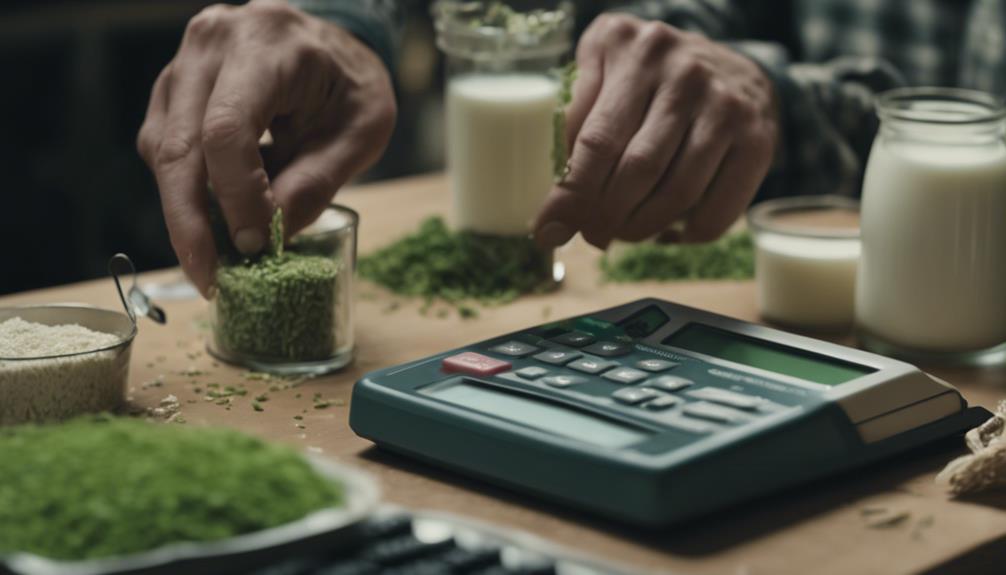
Calculating the Metabolizable Energy (ME) for concentrates involves evaluating the energy content of different feed ingredients. The ME values can vary depending on factors like moisture content and processing methods.
To determine the ME for concentrates, consider the energy levels of each ingredient used in the feed mix. Once you have the ME values for the concentrates, you can calculate the potential milk production by multiplying the total volume of concentrates by the ME value, typically around 11.5 for concentrates.
By dividing the total ME figure by 5.3, you can estimate the amount of milk that can be produced from concentrates within the overall herd production. Understanding the ME content of concentrates is essential for optimizing dairy cow nutrition and enhancing productivity when utilizing forage-based diets.
This knowledge allows for better planning and management of feed resources to support the health and performance of the herd.
Estimating Milk Production From Concentrates
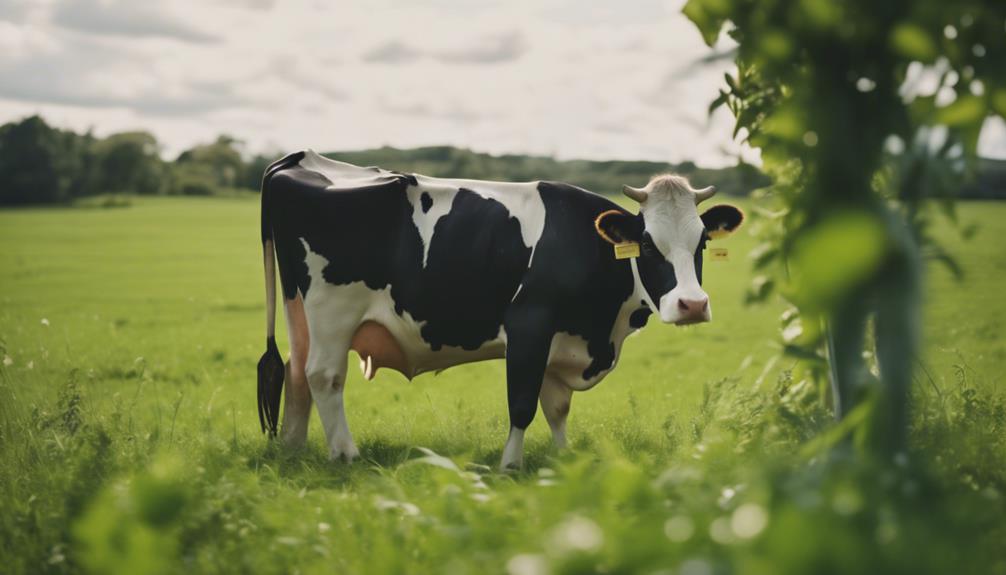
Estimate the milk production contribution from concentrates by calculating the total energy derived from the volume of concentrates used in your dairy herd.
To do this, follow these steps:
- Consider all types of concentrates, including moist options like Vitagold and Trafford Gold, to guarantee an accurate estimation.
- Multiply the total volume of concentrates used by 11.5 ME (megajoules of energy) to determine the energy contribution to milk production.
- Divide the total energy figure by 5.3 to estimate the milk produced specifically from concentrates in your herd.
- This calculation provides valuable insight for dairy farmers into the significant role concentrates play in the overall milk production of the herd. By understanding the specific contribution of concentrates, farmers can make informed decisions regarding their herd's diet and optimize milk production efficiently.
Factors Affecting Milk Yield
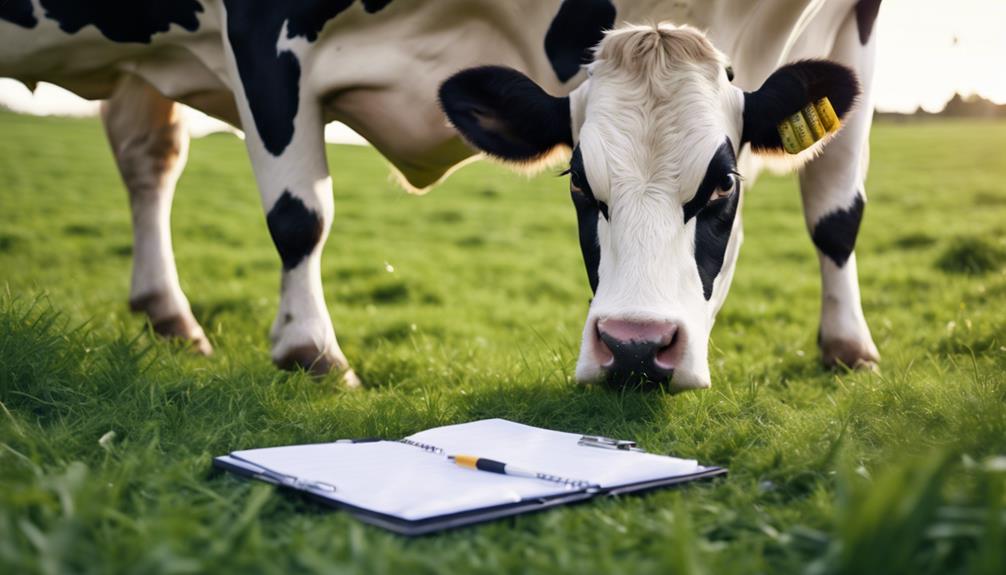
Factors that affect milk yield from forage include the quality and digestibility of the forage, as well as the animal's breed, age, and health status.
The amount of concentrate feed given to the animal can also impact milk yield, as it affects overall energy and nutrient intake.
Environmental conditions like temperature, humidity, and access to water play a role in how efficiently a ruminant can convert forage into milk.
The stage of lactation and herd dynamics, including stress and competition, can influence milk production from forage.
Proper management practices, such as monitoring body condition score and adjusting feed rations, are essential for maximizing milk yield.
By considering these factors and making informed decisions, you can optimize milk production from forage and promote the health and productivity of your animals.
Case Study: Applying the Method
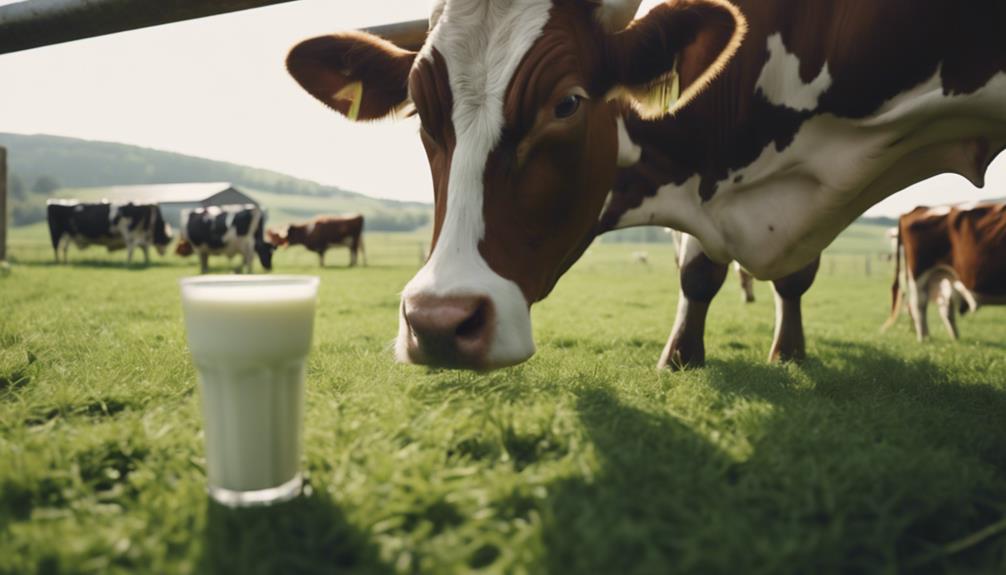
To apply the method for calculating milk production from forage, consider the total milk produced by the herd and the total concentrates used in a month.
Here's a step-by-step guide to help you navigate through the process:
- Add Up the Totals: Sum the milk produced by all cows and the amount of concentrates consumed in a month.
- Account for Moist Concentrates: Make sure you account for moist concentrates like Vitagold and Trafford Gold for accurate calculations.
- Crunch the Numbers: Multiply the total volume of concentrates by 11.5 ME, then divide the resulting figure by 5.3 to determine milk production from concentrates.
- Understand the Breakdown: This method provides a clear breakdown of milk production from forage versus concentrates, giving you insights into your herd's dietary efficiency.
Monitoring and Adjusting for Optimal Results

To optimize milk production from forage, regularly monitoring and adjusting your herd's diet to balance energy and protein levels is vital. Monitoring milk production and forage intake allows you to gauge how efficiently your cows are converting forage into milk.
By adjusting the diet to maintain the right balance of energy and protein, you can maximize milk production from forage. Factors such as forage quality, digestibility, and availability play essential roles in this optimization process.
Calculating milk production from forage enables you to assess the effectiveness of your feeding program and make informed adjustments as needed. This practice not only helps in maximizing the use of homegrown resources but also in reducing feed costs.
Frequently Asked Questions
How Do You Calculate Milk Yield From Forage?
To calculate milk yield from forage, add total milk produced by the herd to total concentrates used in the month. Include moist concentrates like Vitagold and Trafford Gold. Multiply total concentrates volume by 11.5 ME, then divide by 5.3 for milk produced from concentrates.
How Do You Calculate Milk Production?
To calculate milk production, add up total milk yield and concentrates consumed. Incorporate moist concentrates like Vitagold and Trafford Gold. Multiply the total concentrates by 11.5 ME, then divide by 5.3 for concentrates' milk contribution.
How Do You Measure Milk Yield?
To measure milk yield accurately, add the total milk produced by your herd and the concentrates used. Divide the total ME figure by 5.3. Including moist concentrates like Vitagold and Trafford Gold is essential for precision.
How Do You Calculate Requirement of Feed for Milk Production?
To calculate feed requirements for milk production, first determine total milk output. Include concentrates like Vitagold and Trafford Gold. Multiply concentrate volume by 11.5 ME for energy. Divide by 5.3 to estimate milk from concentrates. Optimize feed usage efficiently.
Conclusion
In summary, mastering the art of calculating milk production from forage is like discovering the hidden treasure in dairy farming.
By understanding the importance of forage, concentrates, and various factors affecting milk yield, you can optimize your herd's performance and maximize production.
With careful monitoring and adjustments, you can guarantee your cows are producing at their peak potential.
So, grab your calculator and get ready to reveal the secrets of dairy production!


